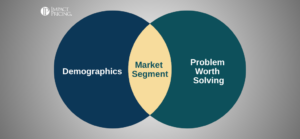You can listen to the full audio version of this blog we call — Blogcast.
The essence of value-based selling is listening to your customers to find out what is important to them–from both a business and personal perspective–and then helping them understand how your offering helps solve their problems or achieve their goals. There is no way for salespeople to guess enough about any specific customer to know how much value that customer should actually expect from your product. Also, customers don’t know enough about your product to know how much value they will receive. It takes a conversation between sales and the customer to determine this. This is value-based selling.
Many companies are moving toward value-based selling, having heard the stories of the impact it can have. They send their salespeople to training. They emphasize selling value. But it doesn’t provide the hoped-for results so they blame sales. After all, it’s called value-based selling. The salespeople are responsible for it, aren’t they?
Honestly, no.
Sure, sales plays a huge role in the effectiveness of value-based selling, but they can’t do it alone. Your buyer’s journey doesn’t start when they talk to one of your salespeople. By then, the buyer has already researched alternatives and formed opinions on what was important to them.
The only way to influence buyers BEFORE they talk to your salespeople is through marketing. Marketing fills the sales funnel, and salespeople guide buyers through it. Sales and marketing must work together to provide consistent, coherent, and relevant messages. When they don’t, the wrong buyers enter the funnel and become confused when salespeople talk about something different.
Why Value-Based Selling Needs Marketing and Sales
The huge advantage to NOT using value-based selling is you can simply list the features of your product so the people who want those features will buy them. However, this isn’t effective. Only experts can translate features into value. Most of your new buyers are not experts. They don’t know what features will effectively solve their problems. The role of sales in value-based selling is to help buyers understand the value of the features to each buyer. To help buyers learn which features solve their specific problems.
Pause. You probably accept that only experts can translate features into benefits. You probably also believe that most new buyers are not experts. So here’s the disconnect. Why does most of your marketing content talk about your features?
Buyers realize they have a problem and begin looking for a solution. They likely search the Internet. What do they type? They type about their problem. They are not experts. They don’t know the names of the features to search for.
When they first land on your web page, do they quickly realize they are in the right place? Do they recognize their problem on your website? Can they dive deeper to learn that you truly understand their problem? Because they will only call a salesperson when they believe you might have a solution to their problem. Nobody wants to talk to salespeople.
When you attract buyers with your features, you only attract experts. There are two big problems with that. First, experts don’t want to hear your salespeople talk about value. They think they already know, even if they don’t. They just want the specifications. Second, you are missing the majority of the market, those that aren’t experts.
Selling value is about empathizing with your buyers’ problems and desired results. Salespeople must learn to identify and talk to problems and results, but so must marketing. It’s a team sport. Your buyers see you as one company, not two departments. Being consistent with messages about problems and results will bring the right buyers into the sales funnel and set salespeople up for higher levels of success.
Three Ways Marketing Supports Value-Based Selling
When marketing and sales work together to sell value, companies are more likely to see the hoped-for results that initially drove them to adopt value-based selling. Here are three key areas where marketing should support value-based selling.
- Audience research
Salespeople typically engage with only a handful of customers at a time. They form deep knowledge about those customers, but it’s hard to generalize from so few. Marketing, on the other hand, can get input from many customers and from all of the salespeople. This gives marketing a much broader view. Also, marketing often has a budget to spend on market research.
This broad perspective enables marketers to collect, categorize, and prioritize information relevant to value selling. What information? I strongly recommend they focus on problems and results. What problems do customers have that you can solve? If you solve those problems, what results might customers expect? Marketing should create a list of these and prioritize them for sales in terms of likelihood and severity.
Salespeople now have a list of problems and results they should be looking and listening for. Of course, sometimes, sales will find new problems or use cases. When they do, they should report them back to marketing to be added to the list, developed, and prioritized appropriately.
- Developing key content
Buyers are looking for solutions to their problems. Once you have identified the prioritized list of problems, you can create content about each of them. Here is a powerful story format:
- A customer had a problem.
- They implemented our solution.
- The result was (change in a measurable KPI if possible)
- Which resulted in this much incremental profit.
This is effective for any buyers who happen to see it, but it’s even more powerful when your salespeople can tell these stories at the right time.
Marketing should lead with problems and results. Features can be sprinkled in to describe how they solve a problem, but people aren’t buying features. They are buying solutions to their problems. Features are just proof points that we can solve the problems. The more content like this marketing can create, the more your salespeople will buy into value-based selling and the more successful they will be.
- Fill the Funnel
One of marketing’s most critical responsibilities is to attract potential buyers into the sales funnel. But, the quality of these buyers makes a huge difference in the effectiveness of salespeople. Marketing chooses which messages to use and which segments to target. These are critical decisions in determining who ends up in the funnel.
If marketing has collected and prioritized the problems you solve, then the messaging should discuss the highest priority problems. Of course. But that’s not quite specific enough. The nuance of the message depends on who they are targeting.
For value-based marketing, you should target:
- Buyers where the problem is most severe.
- Buyers who are actively trying to solve the problem.
- Buyers who know they have the problem.
- Buyers who have the problem.
If there are enough buyers in category 1, just focus there. If not, move down to category 2, then 3, then 4. Your message depends on the category.
For example, if you’re focusing on category 4, you must convince the buyer they have a problem. In category 3, you emphasize the pain of the problem so they prioritize solving it. In category 2, you want them to know you are the best solution to their problem. In category 1, you want to stress how quickly you can solve it.
If marketing can completely fill the funnel with prospects in category 1, salespeople will be extremely effective. It’s likely, however, that there aren’t enough of them. But the higher the category of the prospect, the easier it will be for salespeople to close the deal.
How to Create a Consistent Value-Based Narrative
The secret to creating consistent messages that work in both marketing and sales is to focus on how the buyers perceive the value of your product. That seems so obvious, but is rarely done.
We’ve said the words problems and results many times during this article. That’s the secret.
Most companies find it difficult to articulate problems from their customer’s perspective. Likely it’s because of the curse of knowledge. You know your product so well, you’ve forgotten what it’s like to not know. Ask people who don’t know your product well to figure out what problems you solve. They will likely use very different, but much simpler, language. This is the language that resonates with your new buyers.
If a buyer has a problem that you solve with your product, what result might they expect? In B2B, these results should be quantifiable. What KPIs (Key Performance Indicators) will you help your buyer change?
You should create a long list of prioritized problems and results that both marketing and sales can pull from as needed. You could create campaigns around the most important problems or results, and you can collaborate to identify which items resonate with which type of customers.
If you’re ready to get started, take a look at my article on Value Tables. Each row lists the features you have that solve that problem or deliver that result. You can also show how to calculate the incremental profit a customer can achieve when they improve that KPI. Documenting all of the above thinking into a single Value Table provides sales and marketing consistent talking points, always pointing back to value.
Conclusion
Both marketing and sales try to influence buyers to buy. Buyers ALWAYS buy to solve a problem and/or achieve a result. It makes sense then that both departments should be aligned around these problems and results. This approach aligns the target audience, the messaging, and the language.
The problem is that so few people have spent time documenting buyers’ problems and desired results. After helping many companies with this, I understand why. It’s not easy.
- Sales would be much more effective if they learned to sell value.
- Marketing would be much more effective if their messaging was around value.
- The company would be much more successful if both marketing and sales talked about the same thing: Value! Value the way your buyers perceive it.
It’s not easy, but it’s worth it. Feel free to reach out if you’re struggling with this and want help. I specialize in helping companies find and document their value.
Share your comments on the LinkedIn post.
Now go make an impact!
 Tags: marketing, pricing, sales, value-based, value-based selling
Tags: marketing, pricing, sales, value-based, value-based selling













